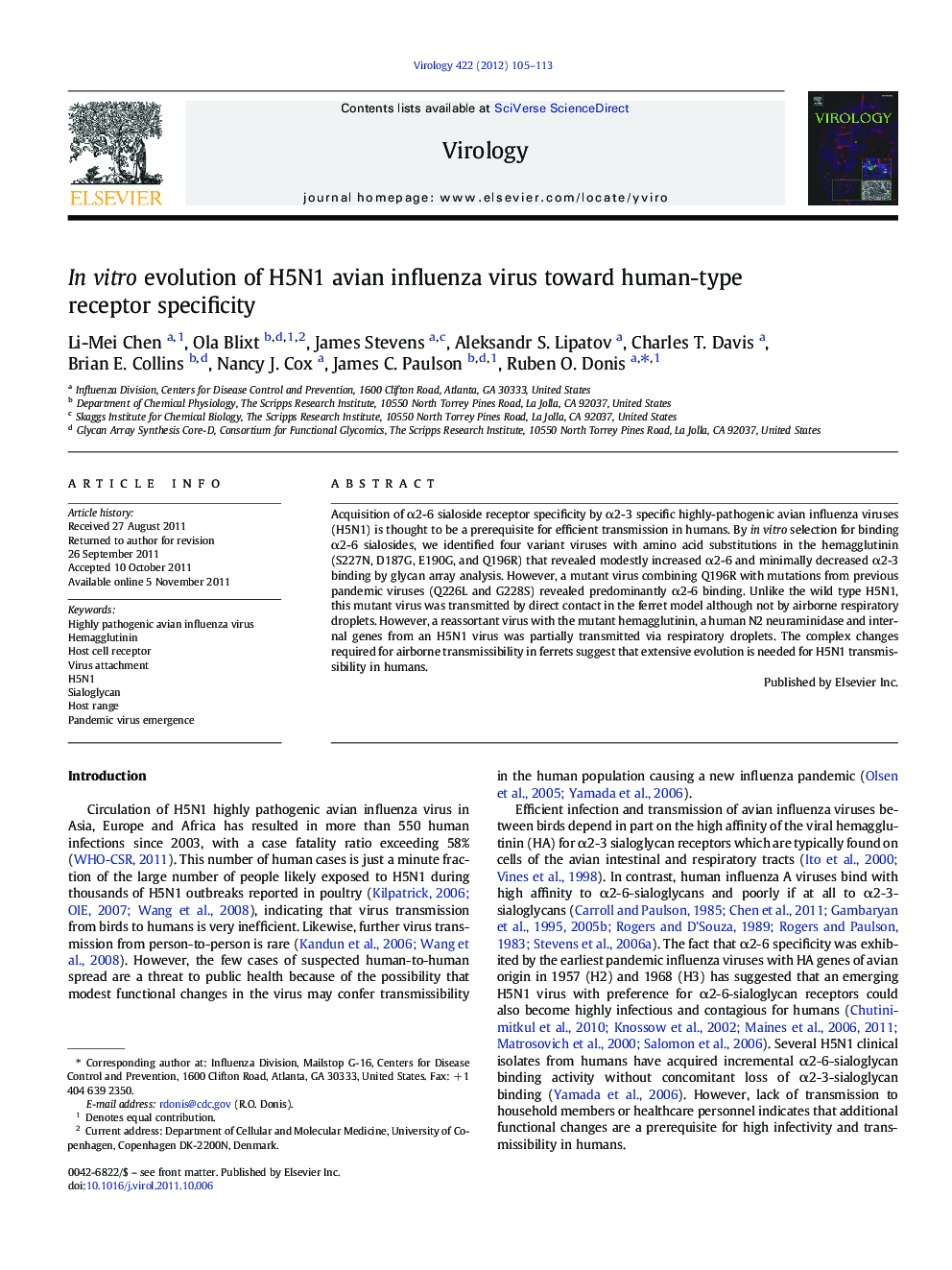| Article ID | Journal | Published Year | Pages | File Type |
|---|---|---|---|---|
| 6141300 | Virology | 2012 | 9 Pages |
Abstract
Acquisition of α2-6 sialoside receptor specificity by α2-3 specific highly-pathogenic avian influenza viruses (H5N1) is thought to be a prerequisite for efficient transmission in humans. By in vitro selection for binding α2-6 sialosides, we identified four variant viruses with amino acid substitutions in the hemagglutinin (S227N, D187G, E190G, and Q196R) that revealed modestly increased α2-6 and minimally decreased α2-3 binding by glycan array analysis. However, a mutant virus combining Q196R with mutations from previous pandemic viruses (Q226L and G228S) revealed predominantly α2-6 binding. Unlike the wild type H5N1, this mutant virus was transmitted by direct contact in the ferret model although not by airborne respiratory droplets. However, a reassortant virus with the mutant hemagglutinin, a human N2 neuraminidase and internal genes from an H5N1 virus was partially transmitted via respiratory droplets. The complex changes required for airborne transmissibility in ferrets suggest that extensive evolution is needed for H5N1 transmissibility in humans.
Keywords
Related Topics
Life Sciences
Immunology and Microbiology
Virology
Authors
Li-Mei Chen, Ola Blixt, James Stevens, Aleksandr S. Lipatov, Charles T. Davis, Brian E. Collins, Nancy J. Cox, James C. Paulson, Ruben O. Donis,
